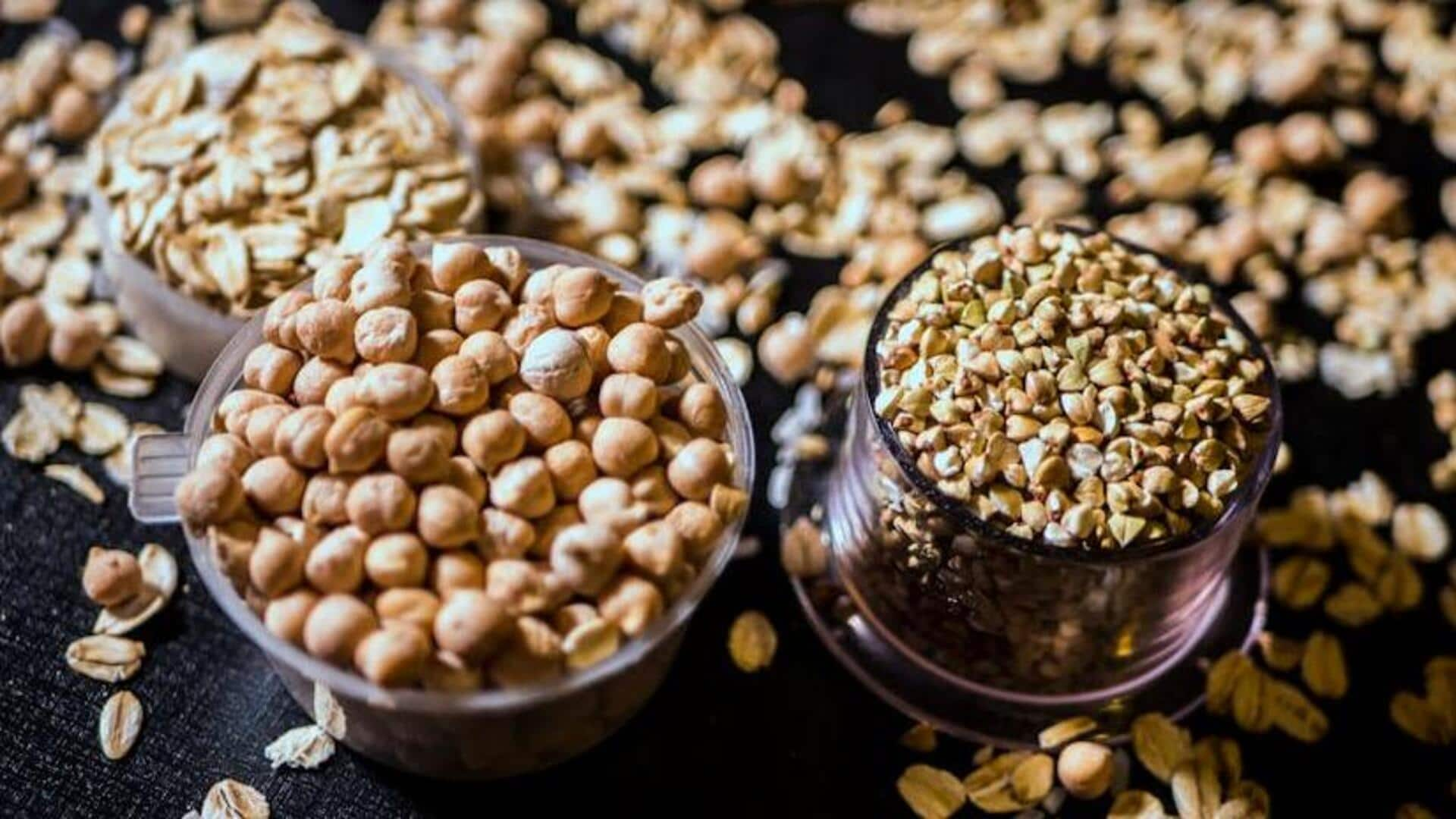
Lentils v/s chickpeas: Which offers more nutrition?
What's the story
Lentils and chickpeas are two of the most widely consumed legumes, prized for their nutritional benefits. Both are high in protein, fiber, vitamins, and minerals, making them staples in various diets across the globe. Here's a look at the nutritional profiles of lentils and chickpeas, comparing their health benefits to help you understand how both can contribute to a balanced diet.
Protein
Protein content comparison
Lentils are praised for their protein-richness, giving around nine grams of protein for a half-cup serving. Chickpeas, too, offer a good amount of protein (around seven grams per half-cup serving). Both these legumes make for amazing plant-based protein sources, ideal for vegetarians and vegans to get their daily protein intake without consuming animal products.
Fiber
Fiber benefits in legumes
Fiber is essential for digestive health, and both lentils and chickpeas are packed with it. Lentils have approximately eight grams of fiber in a half-cup serving, while chickpeas have about six grams. The fiber content helps keep digestion healthy, blood levels in check, and makes you feel full which can help with weight control.
Nutrients
Vitamins and minerals galore
Chickpeas are also loaded with vitamins and minerals. Chickpeas are particularly rich in folate, iron, magnesium, phosphorus, potassium, zinc, copper, manganese, selenium, thiamine, riboflavin, and niacin. You will also find them loaded with pantothenic acid, pyridoxine, biotin, choline, betaine, calcium, chloride, chromium, cobalt, fluoride, and iodine.
Calories
Caloric content considerations
Having said that, calorie-wise, both legumes offer moderate calories per serving size. However, there are slight differences when it comes to their total energy contribution. Namely, while one-half cup cooked portion provides around seventy calories, the other equivalent measure gives about 105 units instead. This indicates the potential impact on dietary planning purposes, depending on individual goals, preferences, needs, and circumstances involved.